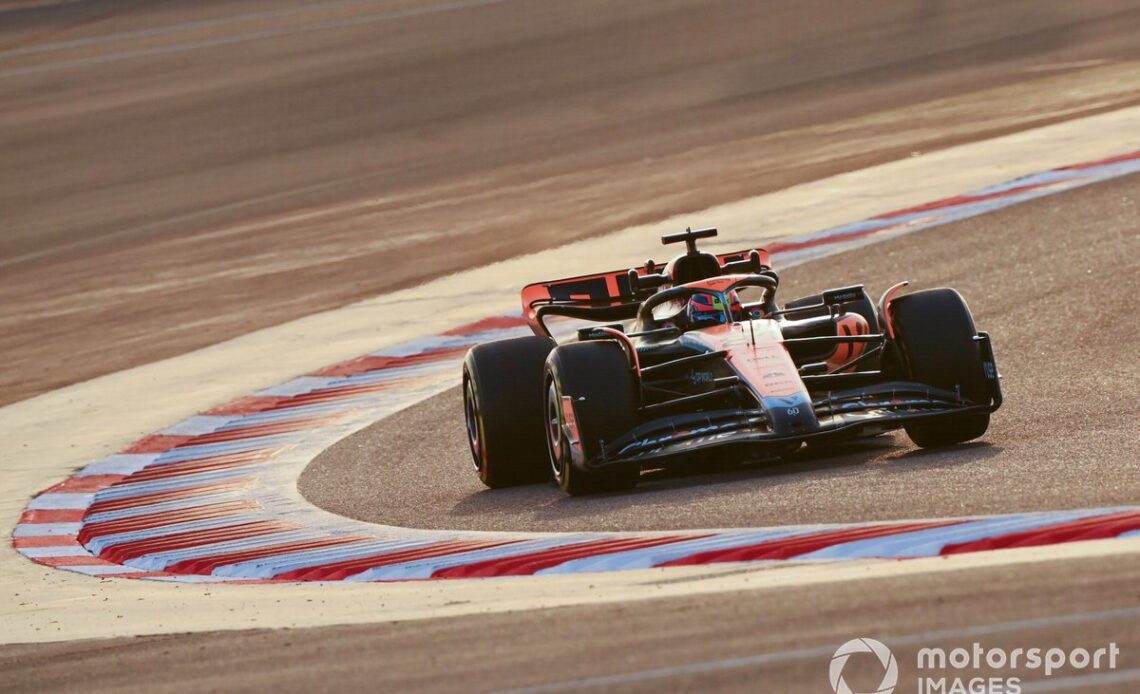Team principal Andrea Stella’s admission that the squad was not “entirely happy” with the launch specification version of its 2023 challenger had laid down a clear marker in reducing expectations.
Launches are normally happy scene-setters for the campaign ahead, and it is quite rare for teams to deliver such a downbeat assessment as their shiny new model is revealed.
The conclusion was that it was either a deliberate attempt to make very bad news less of a shock when track action got underway, or it was just an honest response from a former engineer to a perfectly normal question.
But ever since F1 testing got underway in Bahrain on Thursday, it has been clear why Stella commented in such a manner, because the McLaren has appeared to be out of sorts.
Its lap times have not been stellar and, out on track, the car has appeared laboured, not braking and turning in as well as others and leaving Lando Norris and Oscar Piastri having to wait much later than their rivals to get back on power.
Confirmation of the team’s situation came on Friday lunchtime when CEO Zak Brown offered some more details in the regular lunchtime press conference. He explained that it was simply down to missing key development targets.
On Friday evening, Stella delivered some more insight on exactly what Brown meant by the missed targets.
“Last year, we had some clear objectives in terms of development,” he said. “They had to do with aerodynamic efficiency; some development related to the exploitation of the tyres, and also some other objectives to improve the balance.
“The reality is that most of these objectives have actually been met. But the objective in terms of aerodynamic efficiency of the car, that’s the one where we are still shy of what was our target.”
Oscar Piastri, McLaren MCL60
Photo by: Mark Sutton / Motorsport Images
Poor aerodynamic efficiency essentially means an F1 car produces too much drag at a set downforce level.
It is the opposite of what a team wants, which is maximum downforce for the corners and minimum drag for good top speed.
The biggest problem with draggy cars is not that they are slow in a straight line, it is the compromises that they force teams to make.
In a bid to minimise the deficit down a straight, where a lot of time can bleed away, teams have to reduce wing angles to compensate.
That then means the car is running with less downforce for the corners, which makes things harder in braking and slower through the turns.
This is the…
Click Here to Read the Full Original Article at Autosport.com – Formula 1 – Stories…

